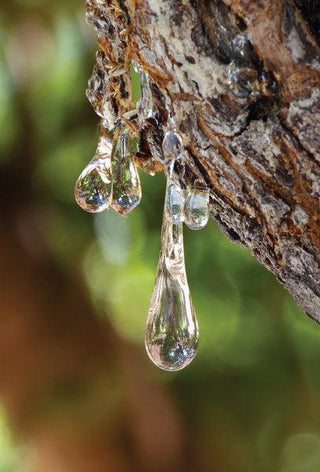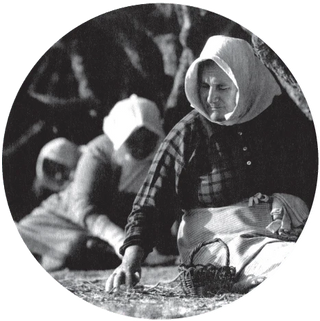

Mastiha Cultivation

The Mastiha tree
Τhe mastiha tree or lentisk – scientific name: Pistacia Lentiscus var. Chia (of the Anacardiaceae family), is an evergreen shrub, 2-3 metres high that develops very slowly and becomes fully grown after 40-50 years, reaching up to the height of 5 metres at its mature age.
Its life span is more than 100 years but it cannot produce mastiha earlier than the fifth or sixth year of its life. It reaches its maximum yield after the fifteenth yearMastiha trees and similar varieties of this tree family are an essential part of maqui-type vegetation found in Mediterranean countries, but only in Chios tree and nature offer those precious mastiha "tears"

The cultivation
Mid-January and throughout February they prune lower branches to give a specific shape to the tree and to create passages for the circulation of air and light as well as for the drying of resin. Before the tree carving process and mastiha’s gathering, the ground around the trunk needs to be free from other plants.Thus, from mid-June to the beginning of July cleaning and soil leveling take place so that any mastiha drops that may fall on the ground can be easily gathered.
The "kentos", as we call the carving of small scars on the lentisk’s bark, is the most crucial stage in mastiha production. It begins in July and goes on throughout August, while sometimes there may be more carvings up until the end of September.
In antiquity, Greek and Latin physicians, such as Hippocrates,Galinos and Dioscourides discovered the medicinal properties of mastiha, which they called the "lentisk resin"

Tradition
It is worth mentioning that mastiha production process has remained practically unchanged by time, something that unbreakably connects it to the historical tradition of Southern Chios.
Since 1997, Chios mastiha has been identified as Protected Designation of Origin product ( PDO ), subject to No.123/1997 Regulation ( L0224/24-1-97 ) of European Union and has been registered in the relevant community list of the PDO products.
For more information visit:
https://gummastic.gr/en/chiosmastiha/production



